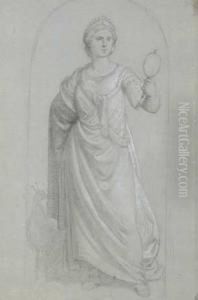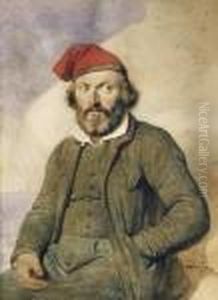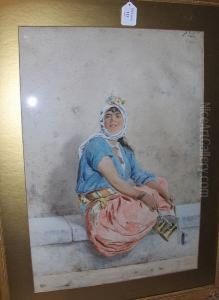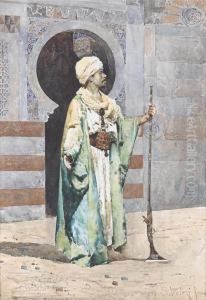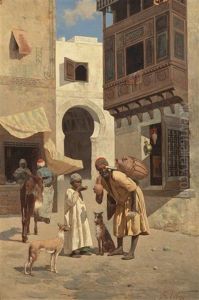Silvestro Valeri Paintings
Silvestro Valeri was an Italian painter and sculptor born on January 7, 1882, in Castiglione di Sicilia, a small town in the province of Catania, Sicily. He is recognized for his contribution to the Italian art scene, particularly during the early to mid-20th century. Valeri’s work was primarily influenced by the cultural and artistic movements of his time, and he was part of a generation of artists who sought to redefine Italian art in the wake of the country's unification and modernization.
Valeri’s artistic journey began at a young age, prompted by the rich cultural heritage of Sicily and the burgeoning art scene of Italy. He studied at the Academy of Fine Arts in Florence, where he was exposed to the Renaissance masters who would influence his style and artistic direction. His early work reflected the academic tradition, but as his career progressed, Valeri began to experiment with more modern styles, including elements of Impressionism and Art Nouveau.
Throughout his career, Valeri remained deeply connected to his Sicilian roots, which influenced the subjects and themes of his artworks. His paintings often depicted the landscapes and people of Sicily, capturing the unique light and atmosphere of the Mediterranean island. Valeri was not only a painter but also a sculptor, and his sculptural works similarly reflected his interest in the human form and his Sicilian heritage.
During his lifetime, Silvestro Valeri achieved recognition in Italy and abroad. He participated in major exhibitions, including the Venice Biennale, and received several awards and honors for his contributions to Italian art. Despite facing the challenges of two World Wars and the changing art world, Valeri remained committed to his artistic vision, creating works that resonated with both critics and the public.
Valeri continued to create and exhibit his art well into his later years, demonstrating a lifelong dedication to his craft. He passed away on May 2, 1973, leaving behind a legacy that has been celebrated in Italy and within the wider context of European art. His works are today preserved in various art collections and museums, and they continue to be studied and admired for their beauty and historical significance.
